There’s something about an outdoor fire that speaks to us humans on a basic wiring level. It doesn’t matter if you are from the most technologically-advanced city, backwoods, dirt-road country, or isolated on a deserted island, we are universally drawn to that flickering glow.
We feel more comfortable sitting around it, and both conversation and thoughtful, comfortable silence flow as effortlessly as orange flames around a pine log.
Of course, we don’t like to just stare at flames: we enjoy food cooked over them, too! For thousands of years, humans have found ways to build natural structures that take fire’s energy and turn it into roasted and baked deliciousness. You too can use the very earth under your feet to create a one-of-a-kind earthen oven following both ancient and modern techniques.
A hand-sculpted oven in the backyard or back 40 is an instant conversation piece, treads more lightly on the earth with the use of natural materials, and can turn out some really, really good food.

We’ve done a lot of research and image collection to bring you some of the best inspiration and resources for dreaming up, designing, and building your own Outdoor Earthen Oven.
What is an Outdoor Earthen Oven?

An outdoor earthen oven is a cooking device that is constructed mainly out of soil found on the site where the oven will be built. Other sorts of masonry such as stone, brick, tile, adobe, and rock are also often used. These ovens are usually built by the end user, but a professional could also be employed if one so desired.
All of these are massive structures that will eventually weigh many hundreds of pounds, which is why they are constructed on site. They are also designed to use wood as the fuel – often utilizing small diameter wood that is not typically useful for much else.
How does an Outdoor Earthen Oven Work?

These ovens can be used in one of two ways: using a fire to directly cook something or using the heated thermal mass of the oven to do the cooking. Neither of these is necessarily better than the other – it all depends on what it is you plan on using your oven for. Most earthen ovens are designed in such a way that you can utilize either method at any given time. And you can easily switch from one to the other as you please.
Direct Fire
Using the oven for direct-fire cooking is rather straightforward. This is the way to use the oven to make the BEST pizzas and flatbreads that you (and your guests) will ever taste. First, a fire is built in the front of the oven. Once the fire is going, you can move it back to the middle of the oven – the part of the oven that will eventually cook the pizza or flatbread. The goal is to heat up the surface of the oven good and hot so that the underside of the pizza will cook as well as the top of it. If the cooking surface of the oven is cold, the fire will burn the top of the pizza and the bottom will still be doughy and somewhat raw. So, be sure to get the surface quite hot.
Once the fire has heated the surface significantly, the fire can be pushed to the back and sides of the oven. Clean the cooking surface as you don’t want bits of burned wood on the bottom of your pizza. There is a tool that looks like a rag attached to a wire at the end of a stick that is designed for this purpose, but you can improvise if you don’t have one of those.
Once the surface is clean, it is time to start cooking. Using a peel, place the pizza or flatbread directly on the heated surface. Watch the pizza cook, and turn it as necessary to ensure that all sides are cooked evenly as the side closest to the fire will cook much faster than any other part. It only takes a few minutes, so keep your eyes on it!

It is important to keep the fire going. If you let the fire go out, your pizzas and flatbreads just won’t cook. So, make sure to add a few sticks to the fire after every pizza or two. Regular cordwood is going to be a bit too big for the average earthen oven; I generally use fallen hardwood branches in my oven and they work great. They burn easily and make a nice hot fire.
Thermal Mass

You can also use an oven’s thermal mass to bake things. The thermal mass of an object is a measure of how much energy (in the form of heat) an object can absorb. Generally, objects that are heavy for their size have a lot of thermal mass, while lightweight objects have very little in the way of thermal mass.
When constructing an earthen oven or any masonry heater, you want to select materials that are massive – this usually means stone, bricks, mud, rocks, and tile. All of these materials are able to absorb a lot of energy from a heat source, and, more importantly as far as cooking is concerned, they are able to release a lot of thermal energy into food.

An outdoor earthen oven that utilizes thermal mass is most often used to bake bread, but you can bake other things, like cookies and brownies, or even dehydrate produce in one of these ovens. In order to use the thermal mass effectively, you will need to make sure that the oven has a door that fits nice and snugly – it is imperative to keep all that heat in the oven during the baking process.
To start baking, you are going to need to make a fire in the oven on the cooking surface. This fire will need to burn nice and hot for a good while (exactly how long depends upon how big your oven is) in order to heat up all the mass of the oven.

Once the oven is heated, let the fire completely burn out. Then, scrap out the remains of the fire and clean the cooking surface (remember to be careful as it will be HOT). Now it is ready to bake. Sprinkle some flour on the cooking surface and put the bread in the oven. Close the door and make sure it seals well. Now you just need to wait until the bread is finished. When it does finish baking, remove the bread with a peel. At this point the temperature of the mass of the oven will have fallen considerably, but will still be hot enough to cook cookies.
Wait even longer and the temperature will have fallen enough to safely dehydrate fruits and vegetables. With a little forethought, you will be able to use all these different temperatures each time you fire up your oven and not let any of that thermal energy go to waste. Now that is efficient!
What are some Benefits of an Outdoor Earthen Oven?
Express Yourself Artistically

Every outdoor earthen oven is a statement piece. I don’t think there is anything on my property that gets as many questions and comments as our outdoor earthen oven – and ours is just a simple domed oven without any extra adornment. However, as you will see in the examples at the end of the article, building with earth lends itself to creative expression. Many of these ovens will have animals or faces built into the oven. You really can get as elaborate are your heart desires.
Use an Oven without Heating Up Your House

For those of us who live off-grid, no much is as bad as firing up the oven in the middle of the summer. You will cook yourself out of house and home! But, if you still have a hankering for baked goods on those hot days, an outdoor earthen oven opens up that possibility without the inconvenience of heating up your house, too. And even if you live on grid with an air conditioner, why make your A/C work any harder than it has to?
Earth Friendly

Most cooking appliances found in the average American home use materials in their construction that could hardly be called earth-friendly. The metals that these appliances are made out of need to be taken from the earth using questionable practices and refined using very energy-intensive means. Once the appliances are assembled, they still need to be shipped great distances to arrive at the store where you buy it. Compare that to an earthen oven that is built on site from materials that are also sourced from that same property. The construction of an earthen oven represents a tiny fraction of the embodied energy in any other appliance in your house.
Cheap (at least it can be)

The majority of our earthen oven was literally dirt-cheap. The only part of our oven that cost anything was the firebrick that serves as the cooking surface. Other than that, the entire structure was constructed from found materials, most of which was dug up from the ground. Can’t be much friendlier to your wallet than free.
Gallery of More Inspiring Images






Earth Oven Resources
- Frequently Asked Questions – Hand Print Press by authors of
‘Build your own Earth Oven’. - Adobecookbook.tumblr.com
- DIY – Sunset’s backyard Adobe oven
- Instructables.com/id/How-to-build-a-Pizza-Oven
- Build an Outdoor Pizza Oven for $20 – Slice Pizza Blog
- Building a Clay Oven – The Basics « The Clay Oven
- Natural Building Colloquium– Building a horno.
- Permaculture Magazine Article The Simple Art of Making an Earth Oven
- Grit.com – Backyard Bread Oven
- Mother Earth News – Build Your own Wood-fired Earth Oven
- Little City Farm – littlecityfarm cob-oven
- Cob Oven Workshop- lots of pics: Masonry Heater Association
- Backwoodshome.com
- Two-chambered cob by Ernie and Erica: youtube
- Cob Brick: runningwave.blogspot.com
- Build Your Own Earth Oven by Kiko Denzer and Hannah Field

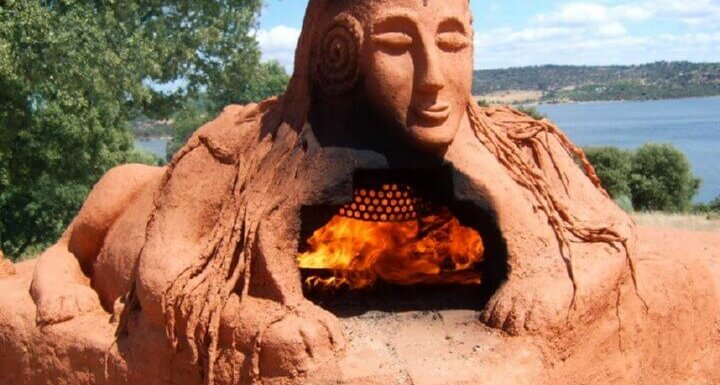



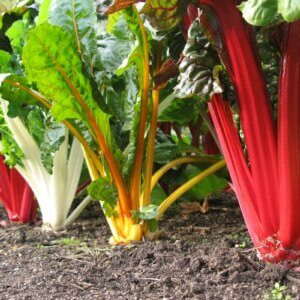

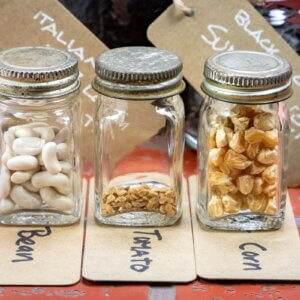








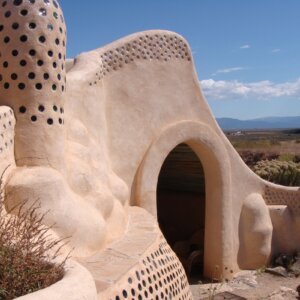






















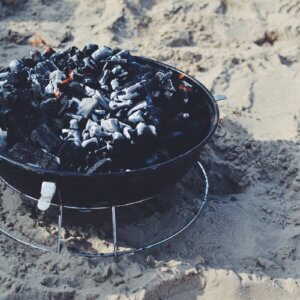


Enjoying your FB postings
I am building an adobe oven and I was wondering if I could use marble slab for the floor of the oven as the cook surface. I am putting the slab on top of firebrick. Have you heard of this being done
Hi Laurie,
Sounds a fun project. As to the marble, I personally do not know anyone who used marble as a cook surface in an outdoor oven. But all kinds of questions arise as to the idea: how thick is the marble? Are there extreme temperature changes in your area? Will there be stress on the edges from the upper part of the oven? I have googled the idea and see people use marble as bread cooking stones…but see no use as a base…sorry I could not be of more help!
building own
old orange recipes photos of ovens are opportune
Mary
is it okay to use a bond adhesive to secure paver stones for he base of the cobb oven. when the adhesive dries and is non-flammable and non-toxic
I love forgathering utile info, this post has got me even more info! .
i love baking
Hello please any advice on the following
a) How long to burn out the hazel structure of oven
b)can we naturally glaze final coat with oak pigment glaze n how?
c)advice re chimney at back of oven and use of flexi silver chimney re it coming out of bender n making it obscure thanks
These are all so cool. I cant wait to get started on my own.
Iv got kiko denzers book on my wish list. I can’t wait to get my hands on his book! The craftsmanship is wonderful and creative! I love everyone’s ideas. I’ll put a design on mine to give it some beauty.
How high off the ground does the oven have to be to stay away from ground moisture. Also can 12′ square concrete paving stones be used in the floor of the oven. Or is it better off with fire brick. What kind of clay can be bought to be mixed with sand to be formed over the oven. Can fire brick be used to shape the dome of the oven?
Can a large square piece of flat slate about 1′ thick be used on the oven floor on top of the fire brick?
I’d like to put the bottom of colored glass bottles in a design in my mud oven, similar to the ones people often use in cob houses. I’m imagining I’d lose some heat that way, but I’m thinking not too much. My concern is whether the heat would break the glass… Has anyone made a mud oven with glass bottle decorations? Is there any reason it can’t be done?